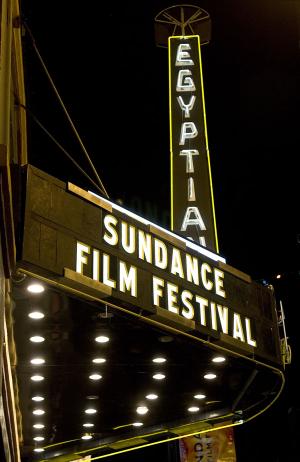Karmically speaking, we have to guess that the Sundance Film Festival is in pretty good shape. The Dalai Lama sent a “message of peace,” which was broadcast during the Music 4 Peace Initiative press conference, an event attended by Dr. Arun Gandhi, the Def Jam founder Russell Simmons and the civil rights leader Dr. Benjamin Chavis, Jr.
(Music 4 Peace also sponsored an appearance by Pras, the Haitian former member of the Fugees, who performed for Haitian Relief.)
Less divinely, but only slightly, Robert Redford came down from the mountain last night to sit in on a panel with the author Naomi Klein and the director Michael Winterbottom, who together made “The Shock Doctrine,” a documentary about Milton Friedman, the Chicago School of Economics, third-world corporate oppression and how countries like Haiti get that way. Great stuff.
And if the connections with American independent cinema seem a bit, shall we say, loose, well that’s all part of the Great Wheel of Life in Park City, Utah.
But it’s hardly a big mystery. When people whisper about the “dirty little secret” of Sundance (the jaded will say, “Uh, which one?”), they’re usually talking about something else: that the documentaries are better than the features? (Yawn.) That the festival is as much about stars as anywhere else? (No kidding.)
That when a film is introduced by someone who says, “It went through the Sundance lab … but that’s not why it’s here,” you know that’s exactly why it’s here? Old news. How about the fact that the festival’s Volunteer Appreciation Day was celebrated Wednesday with the same enthusiasm that prison inmates would celebrate Corrections Officer Day? Tell us something we don’t know.
What filmmakers don’t know is that just because their film got into the U.S. Dramatic Competition — that supposed incubator of fledgling talent, and much of the reason Sundance generates so much heat — the struggle isn’t over.
There are so many movies with well-known names in the lineup that if you come to Park City expecting to get by on the quality of your film alone, you might as well go to Slamdance.
And yet, thanks to the unerring good taste of an alert media, quality films do rise out of the mushy, frozen depths of the Sundance menu.
They don’t have to be as obviously insane as “Cane Toads: The Conquest,” which was shown in 3-D and concerns the amphibious takeover of the Australian continent.
It can also be an understated project like “Lovers of Hate,” which, as described by its own director, is one of those “Directed by who? With who, who and who?” movies that pop up every year to various reactions. And fates.
The film, about two brothers in love with the same woman, was made by Bryan Poyser, who described himself as a Sundance veteran: even though “Lovers” is his first Sundance film, he’s been here eight times, the first couple working for the SXSW Festival in Texas and for the last few, as administrator of the grants program of the Austin Film Society. “I give away about $100,000 a year,” he said. “I was lucky enough to get a couple of grants before I started working there. I got rejected, too.”
Heather Kafka Carlo Allegri/Associated Press Heather
Kafka
It was as an AFS rep that he got the idea for “Lovers,” which takes place largely in an enormous ski house in, yes, Park City. Poyser spent a night there during the 2006 festival, and it gave him the germ of his idea: after his longtime girlfriend Diana dumps him, Rudy (Chris Doubek) follows Diana (Heather Kafka) and his brother, Paul (Alex Karpovsky) — a J.K. Rowling-level writer of young-adult fantasy — to a house in Park City, where Rudy manages to elude detection while eavesdropping on the new couple’s affair.
For all the good things the film will do for Poyser, it may mean an even bigger payoff for Kafka. An actress who by her own admission has spent most of her career playing “heroin addicts, screw-ups and freaks,” she is very plausibly the object of two men’s adoration in “Lovers of Hate.”
“I usually don’t even play roles where I get to look pretty,” she said. “Most of the time when I’m in the makeup chair, it’s to ugly me up.” One of Kafka’s bigger movies was the 2003 “Texas Chainsaw Massacre,” which certainly didn’t win her any endorsement deals from L’Oreal. But the part of Diana, she said, is “a total babe role for me! I get to wear big puffy hair and makeup. I‘m the love interest, the hottie. That’s never happened to me. I know I’m not the typical conventional beauty or whatever, and I’m O.K. with that, but I appreciate that Bryan didn’t think that was important.”
For an actress who not so long ago was supplementing her income by working as a cashier at Whole Foods in Austin, Tex., this week’s festival has so far meant a portal into another world. Which is what Sundance is supposed to be about. And occasionally is.
